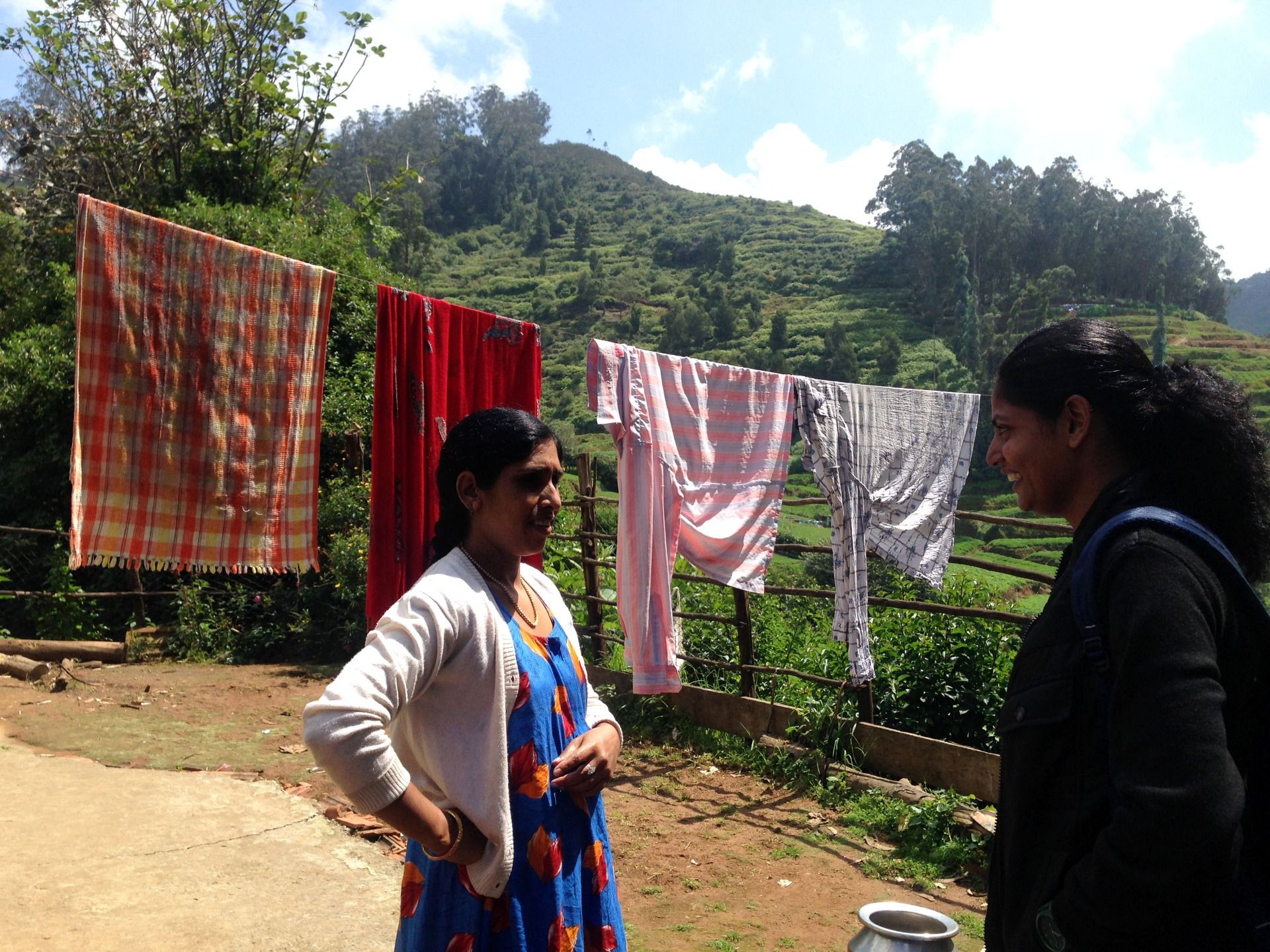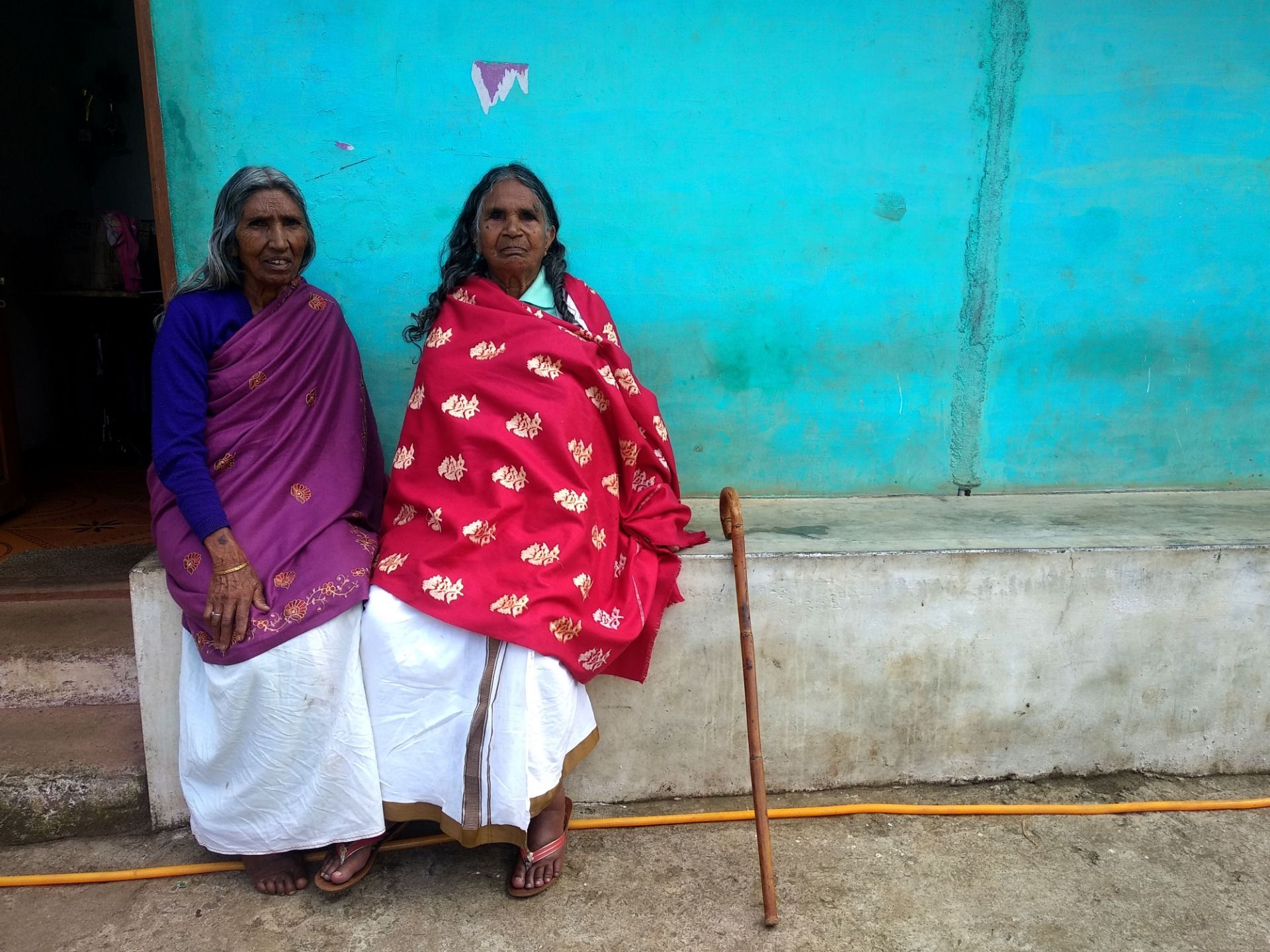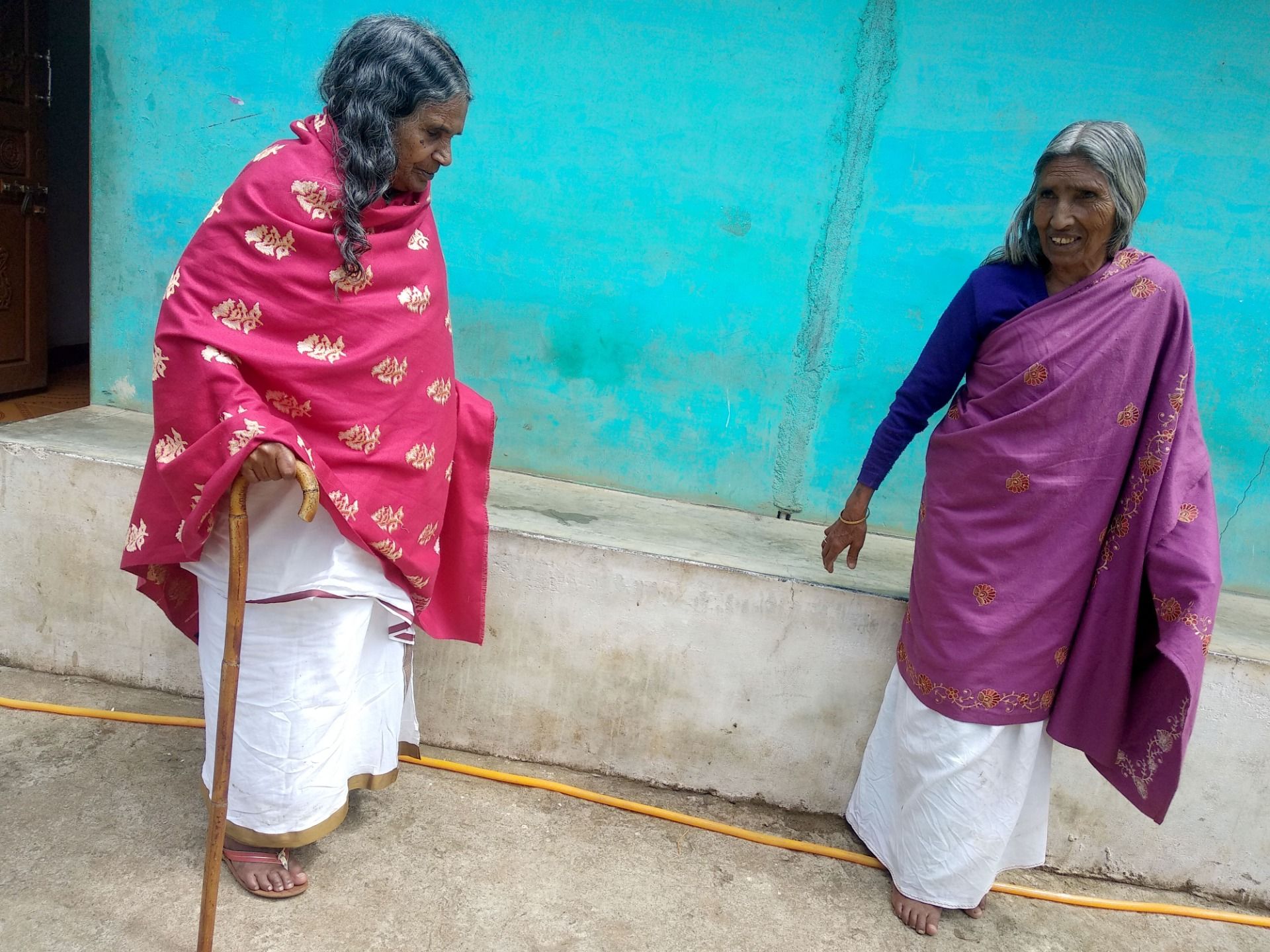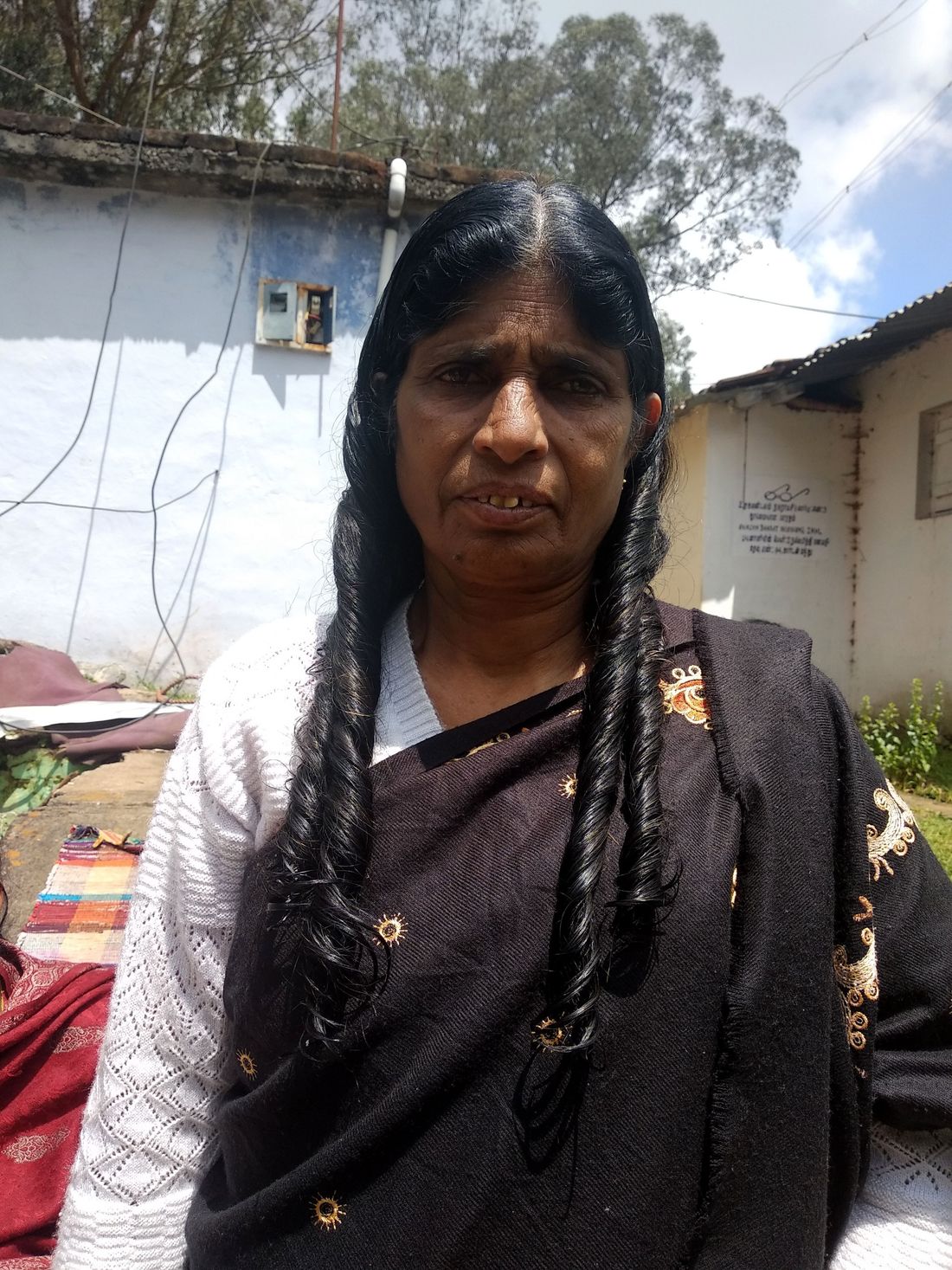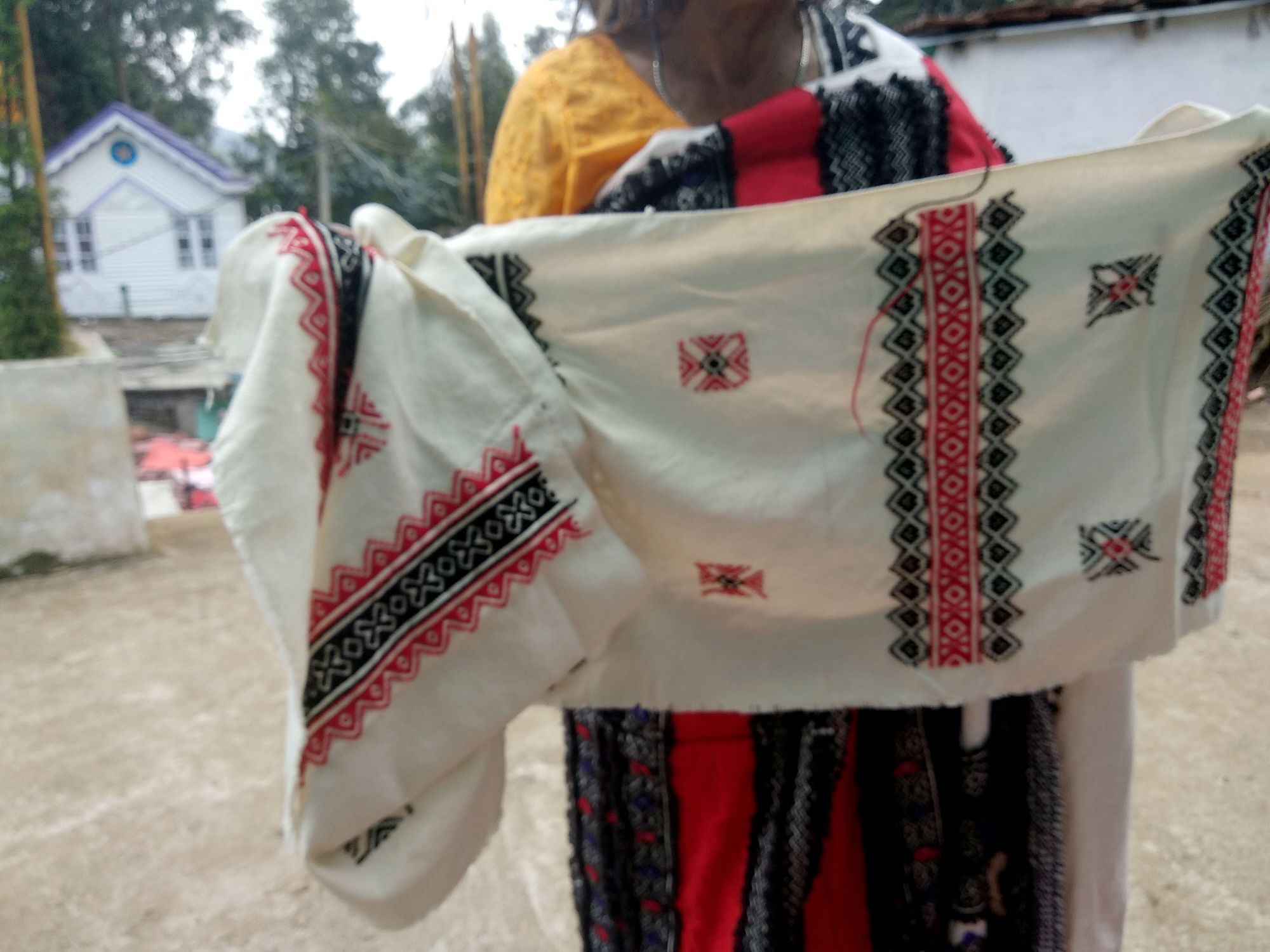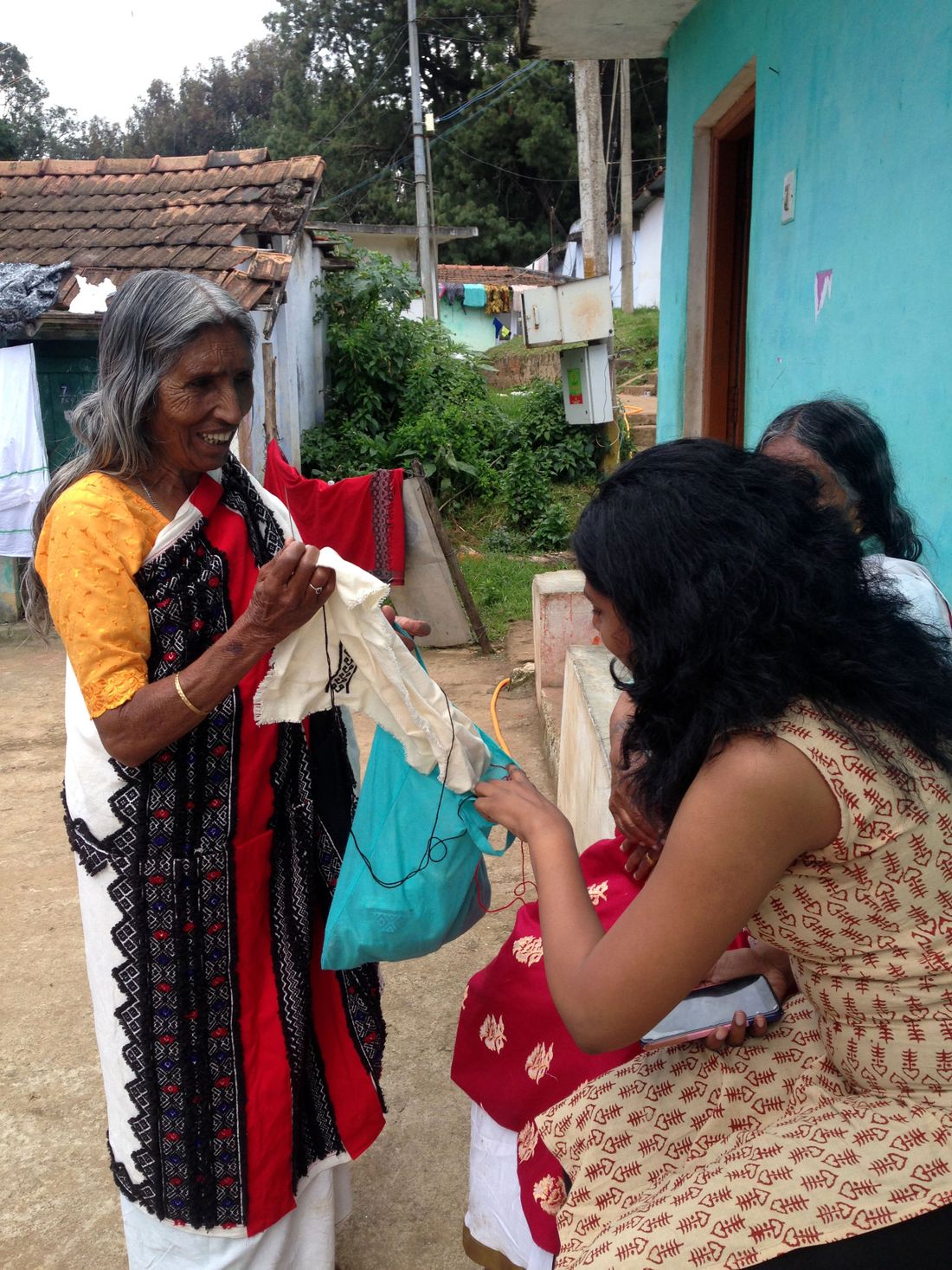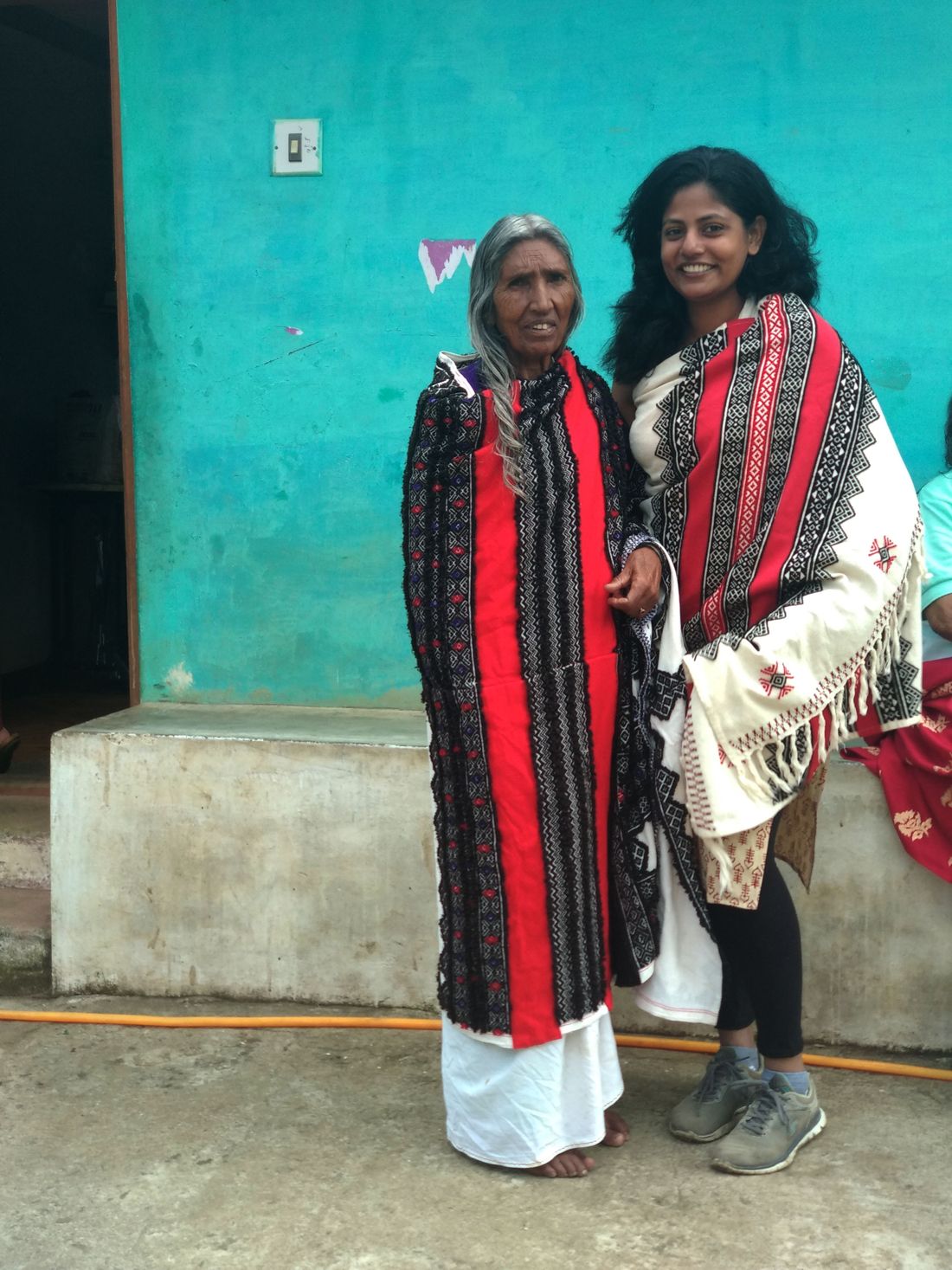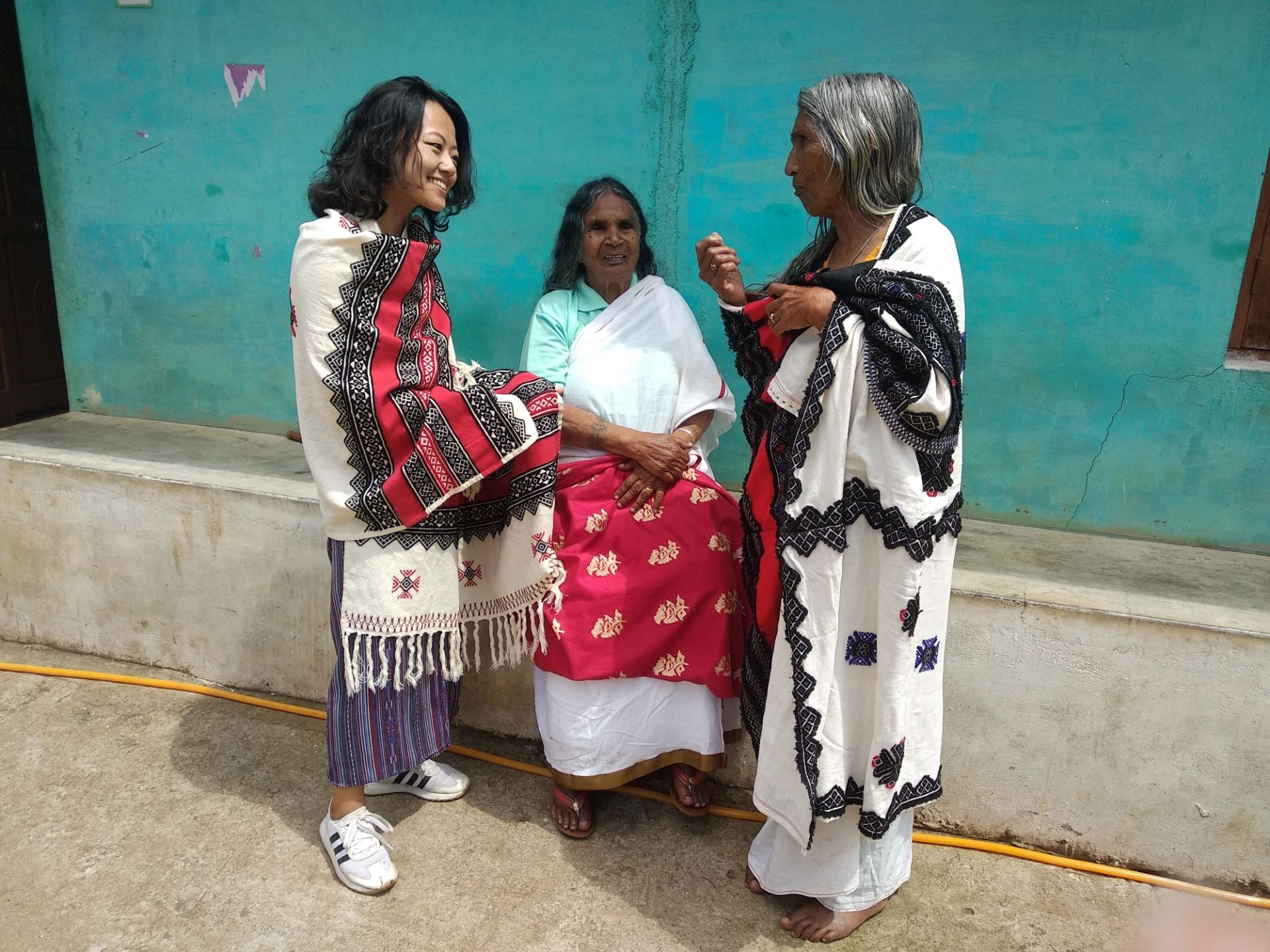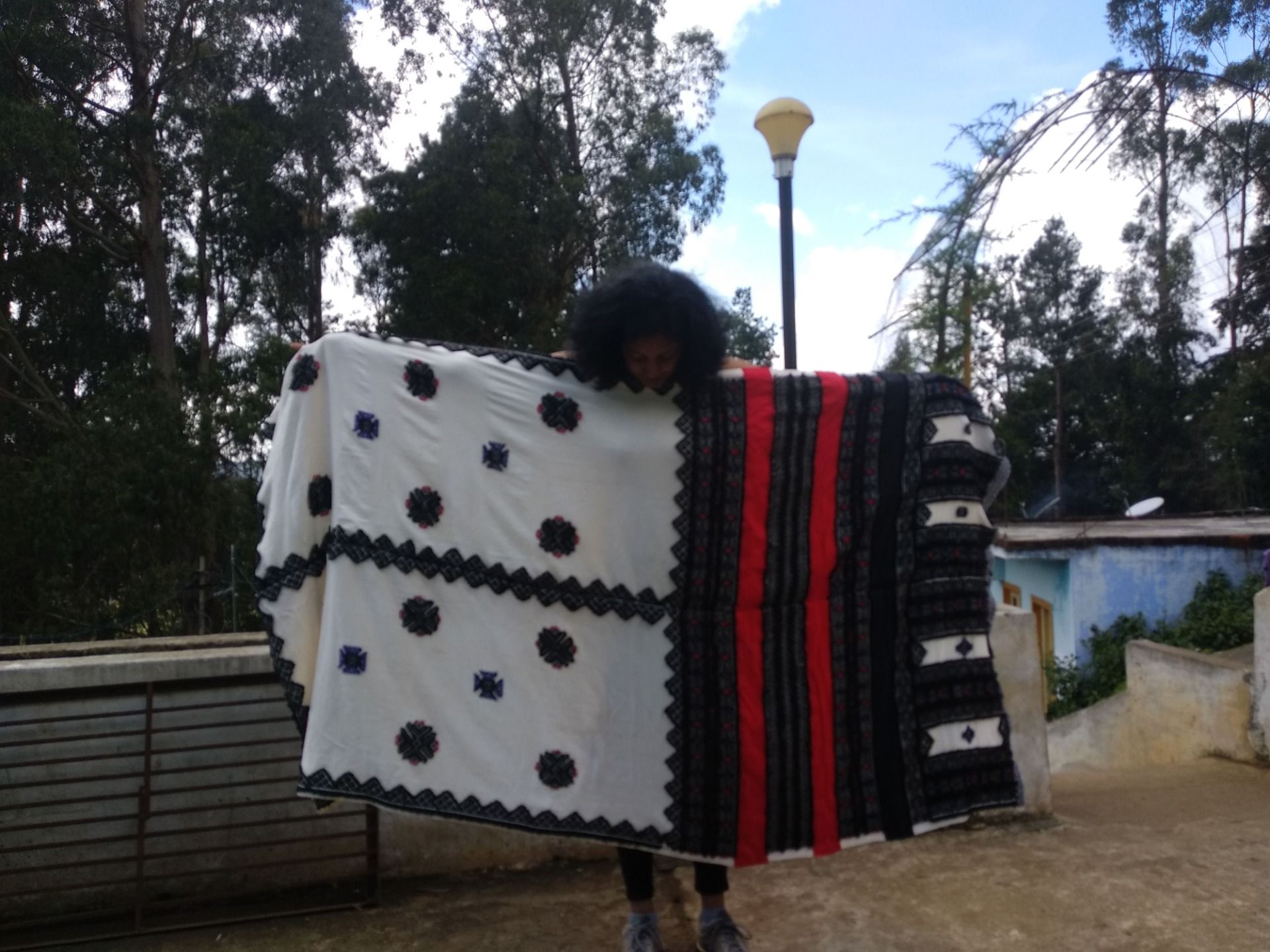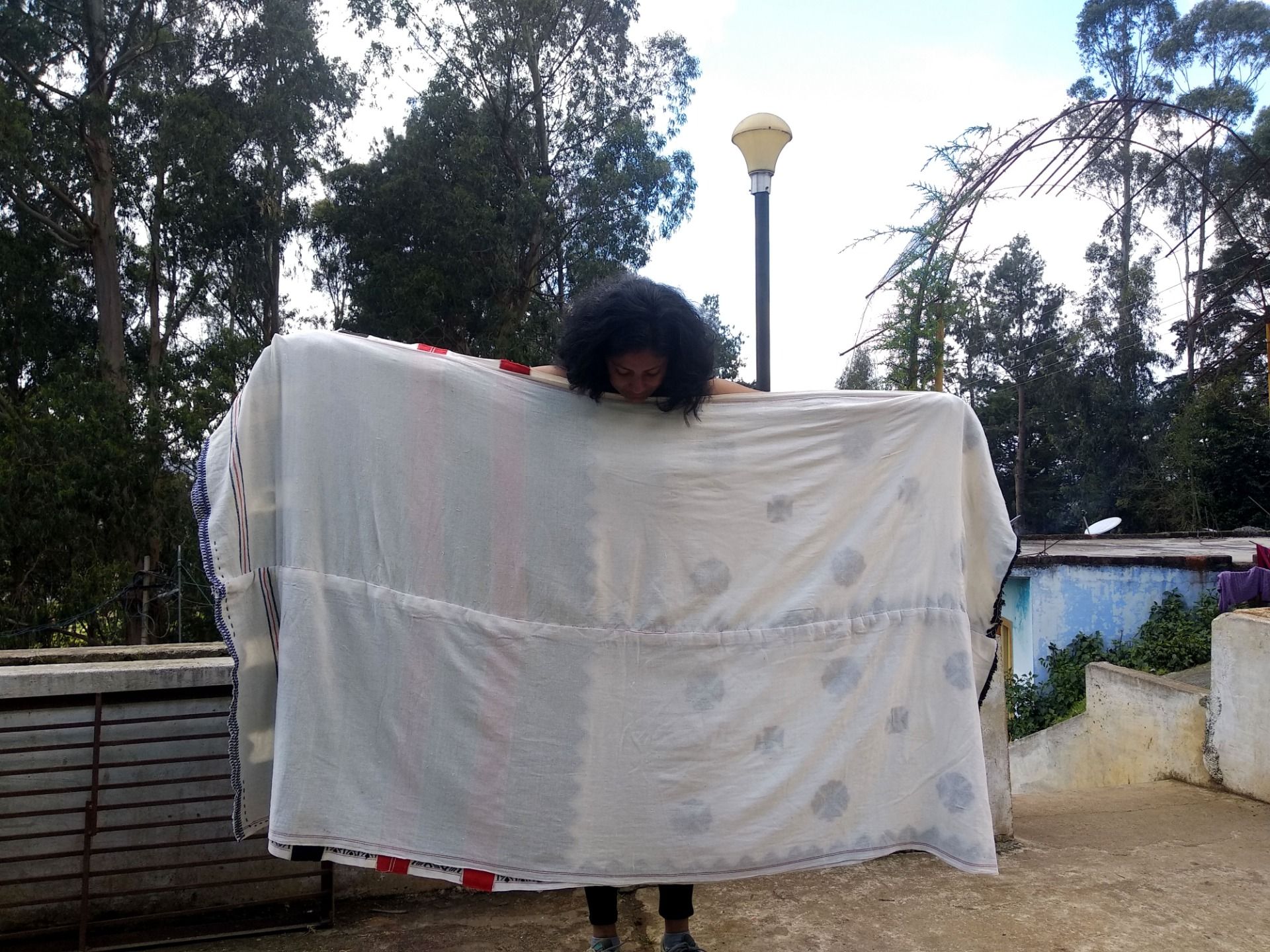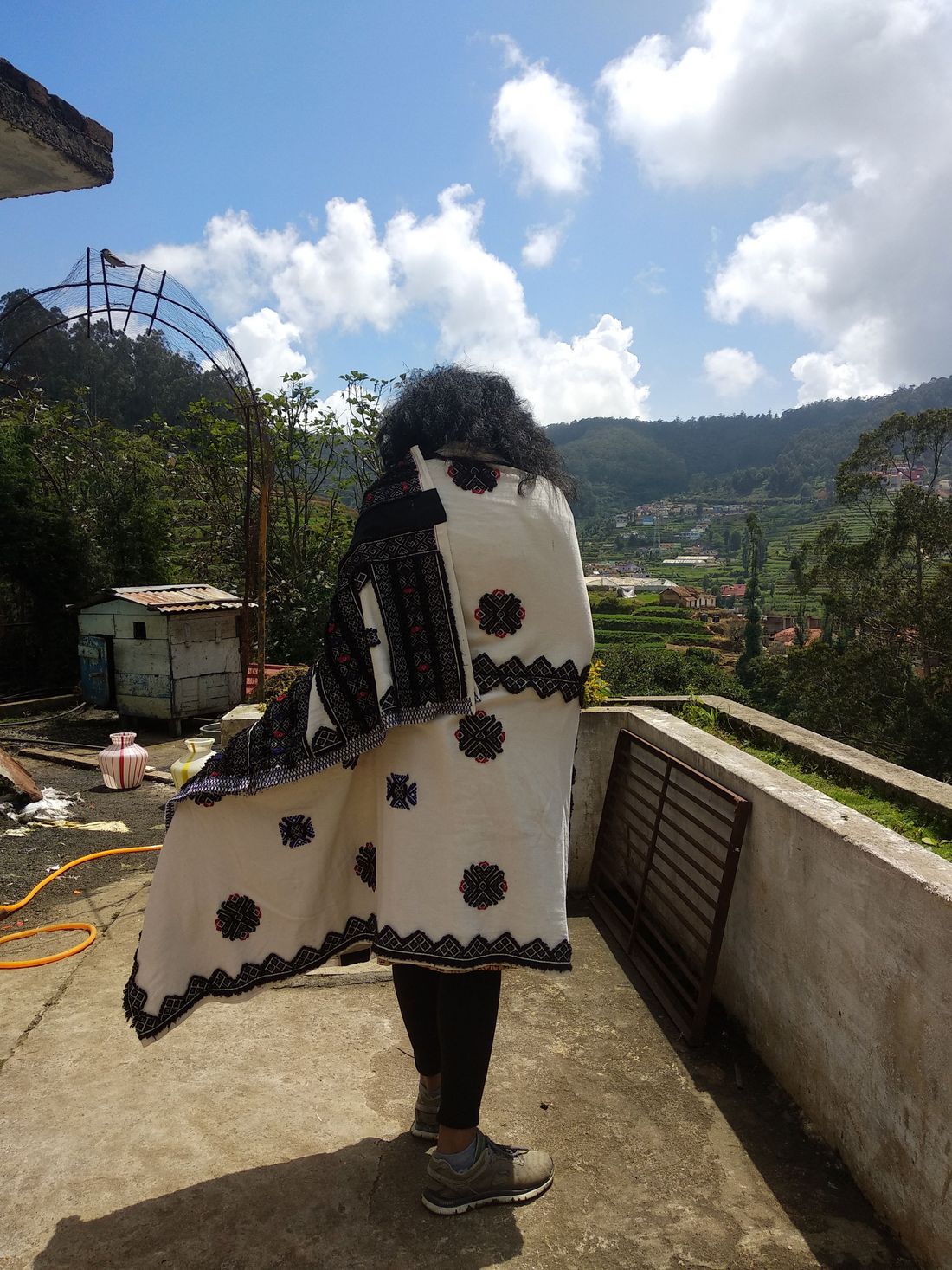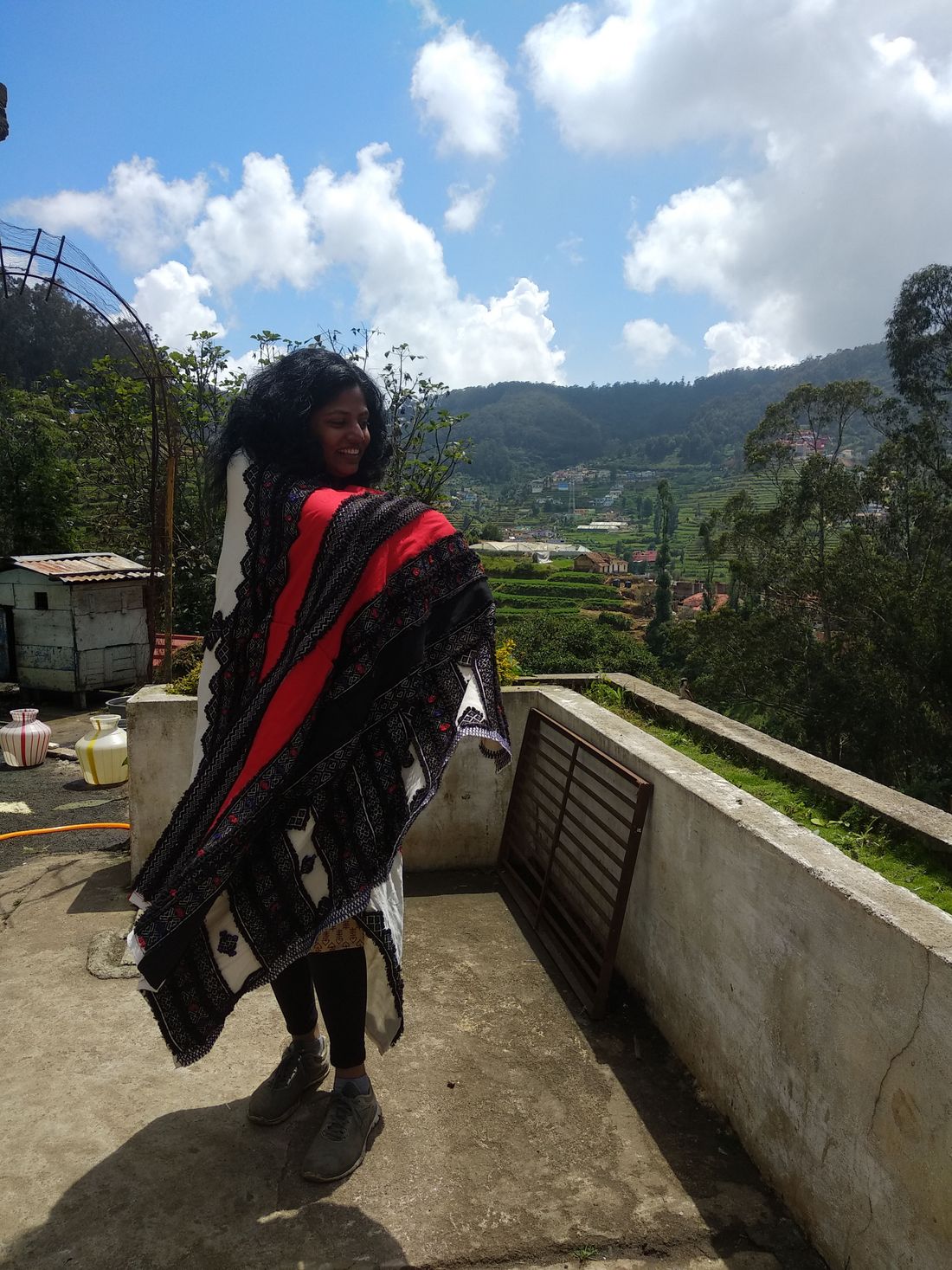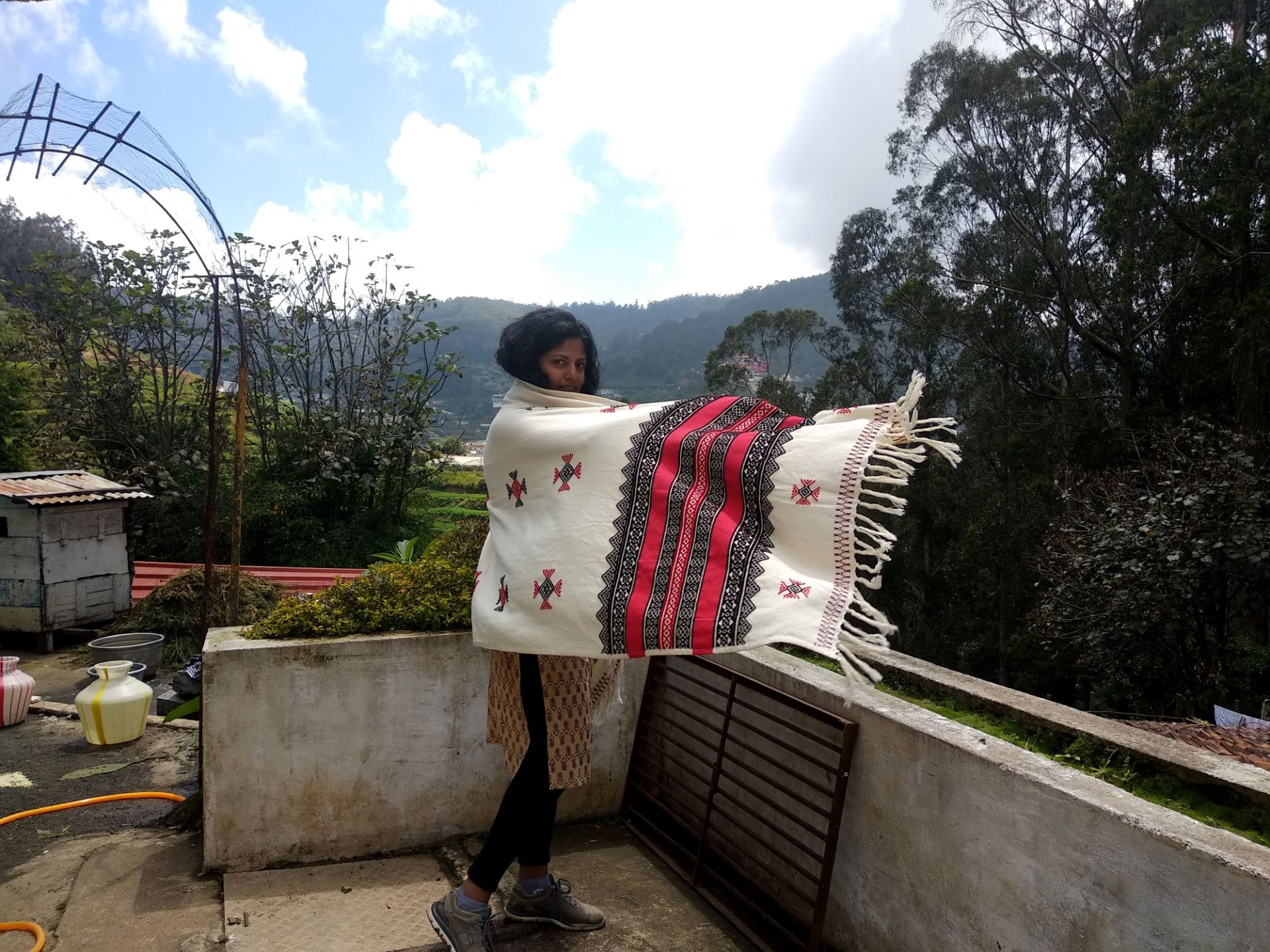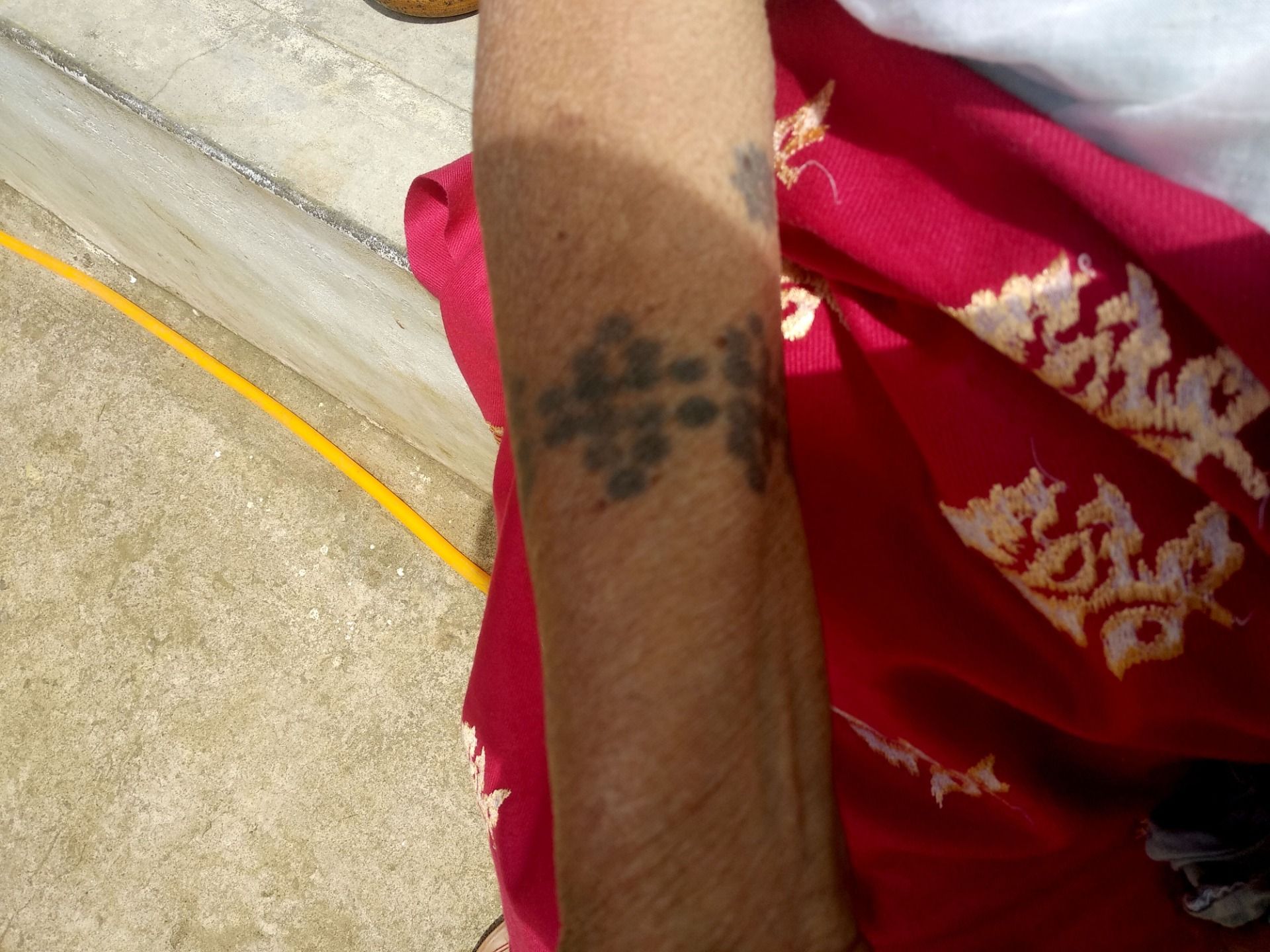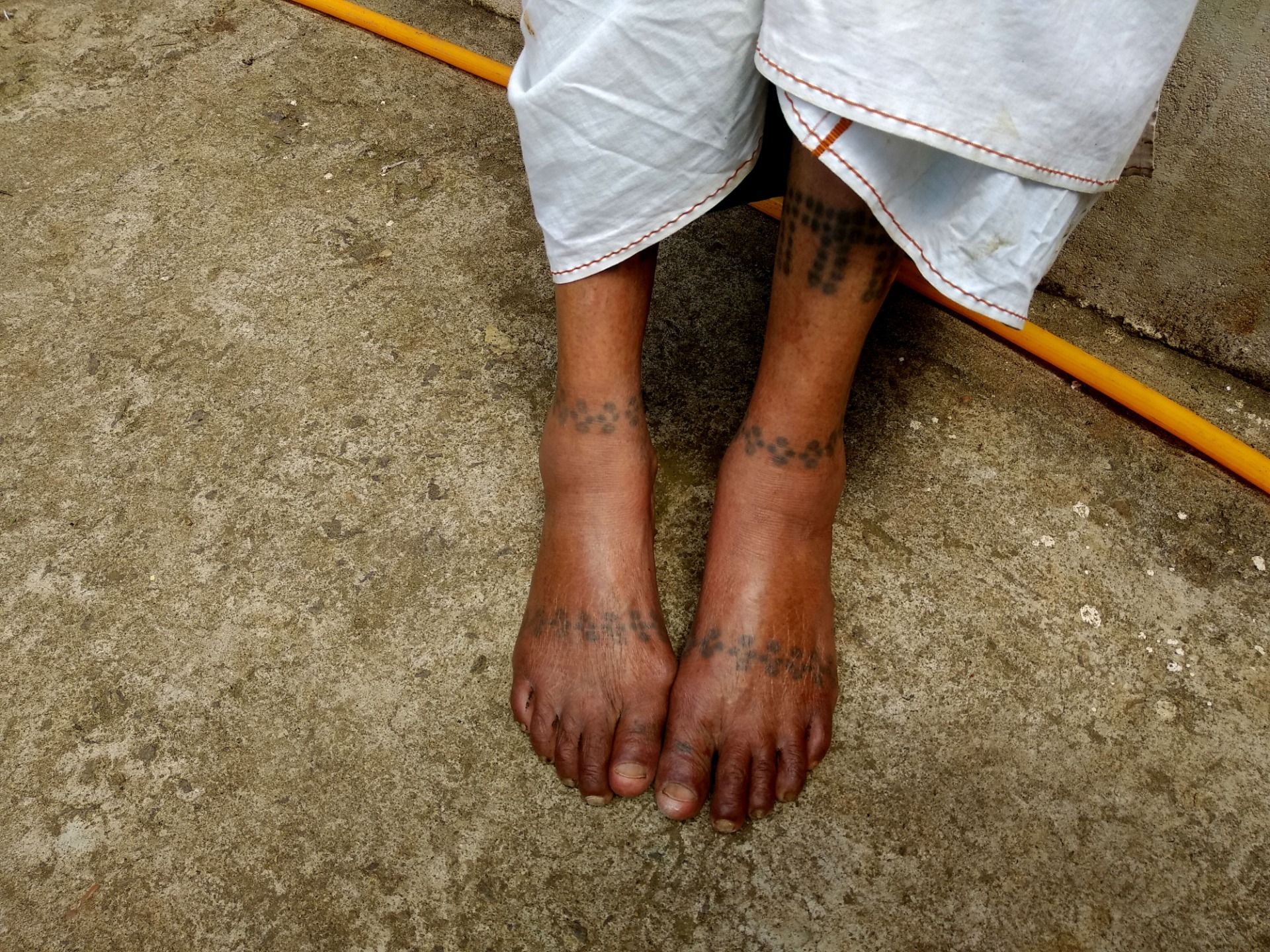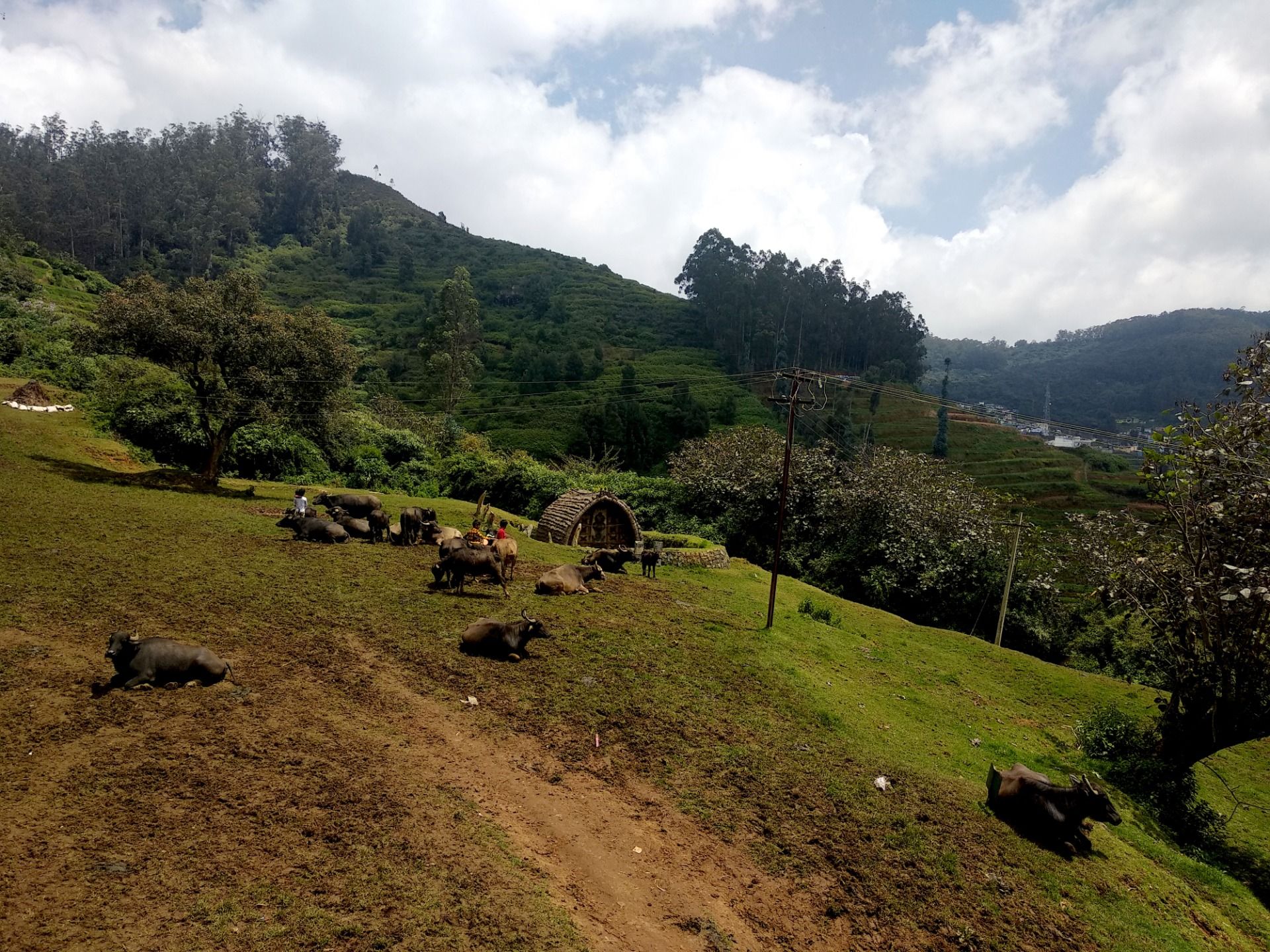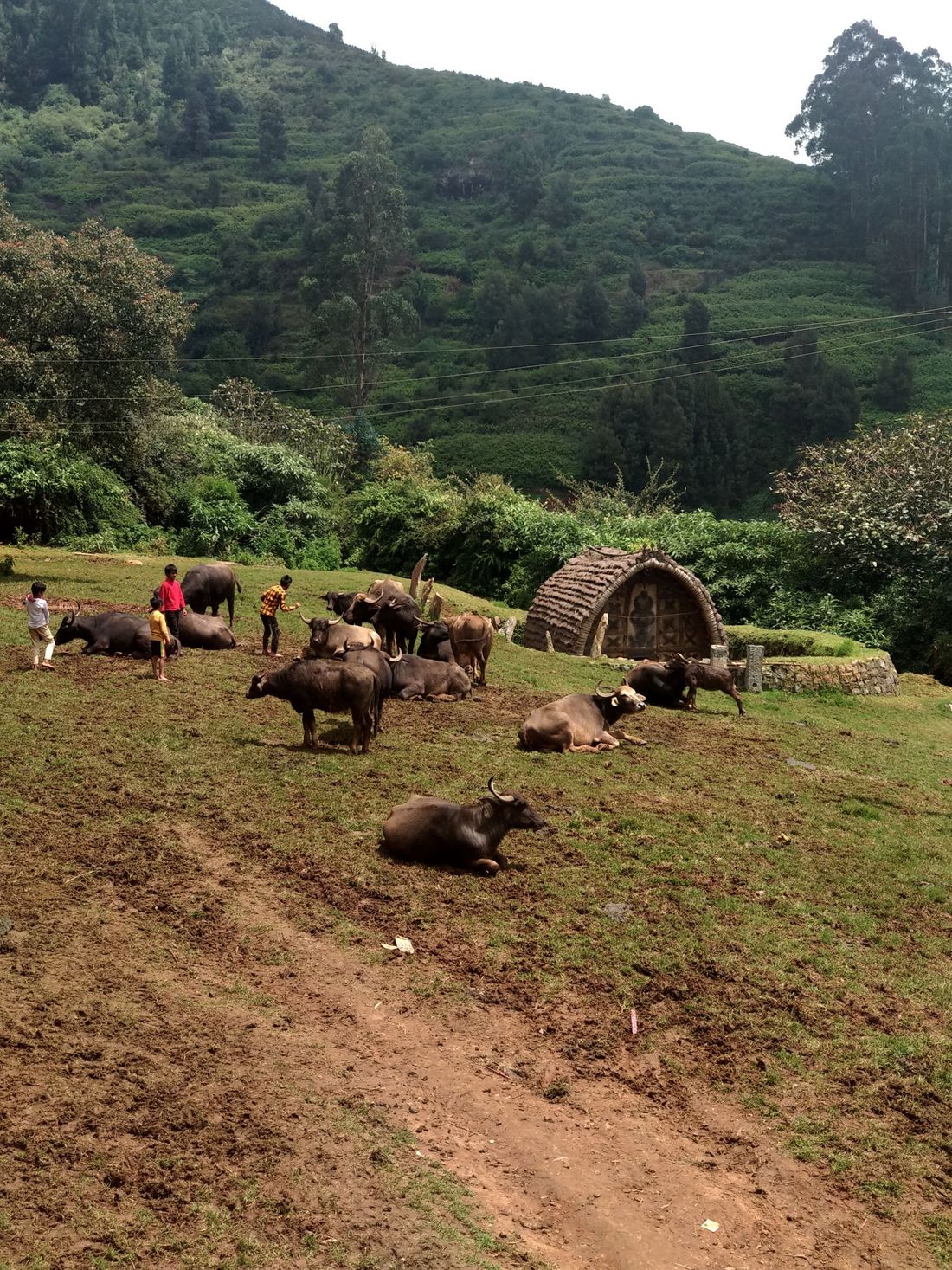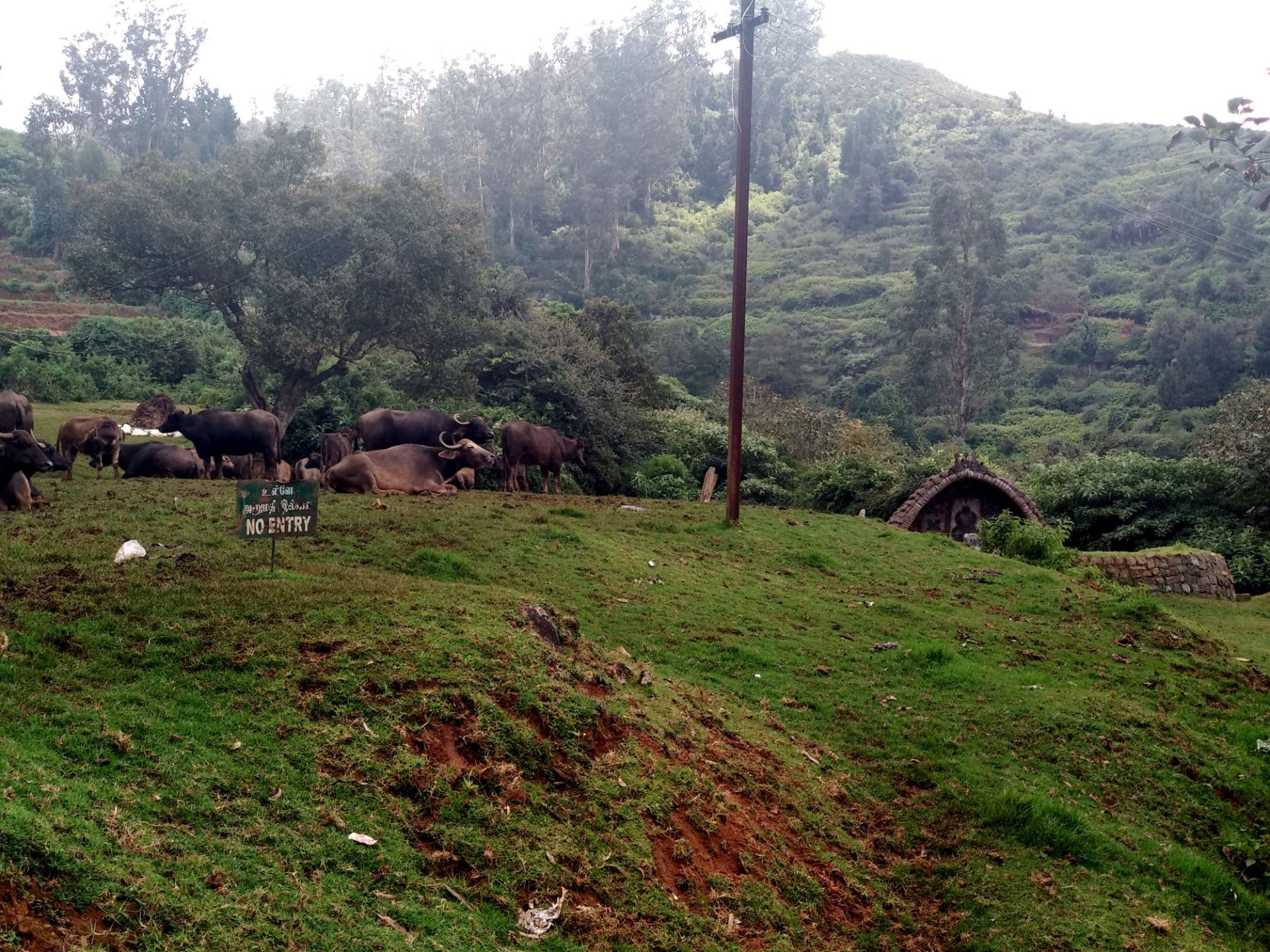As I mentioned in the previous blog (The Mighty Nilgiris, Tribes and the British), the Toda tribe is one of the early tribes that inhabited the Nilgiris and they have their own unique lifestyle. Today, there are only less than 1000 people in this tribe who live in around 7 different villages in different parts of the Nilgiri mountain range.
I had read much about the tribe and always wanted to visit them. One thing they are famous for outsiders is for the fabric and the design they create on them. In the earlier days, they used to make the fiber from the nettle plant. These days, the raw materials come from Tirupur and other parts of India.
The Toda tribe is also studied by many historians and anthropologists. Their ceremonies like weddings and funerals attract many people to photograph these events. A quick search on the internet on the “ Toda tribe” will display images of people in a white shawl with their hair curled on both sides and the dome-shaped temples in their villages which is known as “mundu” in their language.
This blog is about the time I visited a Toda mundu in Ooty and getting to know their life today.
Toda People
Like I mentioned in the previous blog about the tribes in the Nilgiris, Toda people lived a pastoral life in the earlier days. They ate vegetarian food, worshiped their cattle and had their own unique lifestyle.
Today, they still live in a closed community but well adjusted to the modern world. Their villages are called Mundu and the small dome-like huts are replaced by the normal concrete houses. They still have their cattle and temples but makes a living through normal day jobs.
Finding a mundu in Ooty was a bit difficult since the internet was not much help with the search. Locals helped a lot and we finally reached a mundu in Ooty on the top side of the Botanical gardens. In ancient times, Todas lived in the top part of the hills. I’ll write another blog in detail on how to get there in detail for those who are interested.
Finding a way to reach the mundu, we entered through an alternative route or rather say through the backside of the village. Chi, who was traveling with me in Coonoor, reached the village first and a lady in a normal house clothing was confused about who she is.
That was Laxmi, who came to help us seeing us pretty lost where to go next. We were at the location and already inside the village. It was not special except for the small houses and we could not see the dome-shaped temple we were looking for.
She instructed us to the temple and also introduced to two elder ladies, very soon we were not just outsiders but received a warm welcome. Meet Rajamalli and oh God, I forgot their names, but it was some flower’s name, sorry about that!
What followed was a lot of talking and photos. Pardon me for filling the blog with many photos!
Toda Language
Todas speak their own language which is much different from Tamil, the local language spoken in the state of Tamil Nadu. They do speak in Tamil while talking to outsiders. My Tamil is not so good since this was pretty much the first time I had to use Tamil to this extent.
The language they spoke used a lot of “Sh” sounds. One word I kept hearing is “Tosh” while they spoke to each other. Later on, I came to know that word didn’t mean much. The best explanation I got about it is “it is more like how ‘and’ is used in English”.
The language doesn’t have a script either but it is still passed on to the younger generations. I saw all the kids there spoke in that language. To compare, it resembled the British accent of English, not the English but the kind of sounds they use while they speak. (I am not making much sense here, Am I?)
Anyway, the language is very different and it sounds nothing like any Indian language. Considering there are very few people who exist in the Toda community and not having the script of the language, I really wish someone made an effort to preserve the language.
The Hair
I have seen the curls they make with the hair in all the articles and photographs. So, I was wondering if I could try that. But, unfortunately my hair was not long enough to do that (Why did I cut it just few days back!) but we did try a bit :D
They don't normally do that except for the special occasions. Three days before we visited, there was a funeral. So, most of the elderly still had their hair in that style.
Toda Fabric
While we were talking, one of them went inside the house and came up with a polythene cover. It had all the knitting materials and a half woven shawl. She was curious to show her work to me and we were more excited to see them.
She also wrapped herself in her shawl which was really long and had gorgeous print. Red, black and white were the dominating colours or the only colours used. Soon enough another lady came up with a smaller shawl for us to take photographs.
The two shawls were very different, the one knit for selling and the one they used for themselves. The one sold in the market is shorter and single layered. Since they are bought for the print, that length was good enough.
On the other hand, the one she was wearing was double layered, with an inner lining. The print on that was also very different, thick ones with many patterns. That shawl was very long too. Needless to say, what followed was a photo shoot session where they made me properly wear it on myself.
In the old times, they used to use fiber made out of nettle plants. These days, the raw materials come from Tirupur.
Tattoos
When we talk about their unique way of lifestyle in the old times, Tattoos were one of them. They had these tattoos with circles and lines. These days, only a few of them have those traditional tattoos on them, mostly the elderly. The new generation seems to not have them at all.
One of them while talking showed her tattoos on her arms and legs. They were similar to what I have seen in the articles. I’m not sure if that was a beauty statement of those times or a necessary but the dots were really in line to make a pattern.
Dairy Temple
One of the intentions was to see the diary temple, which is a dome shaped Toda worship place. We went a bit more up from where were sitting to a more open area. There was one temple surrounded by the cattle.
A board that said “no entry” was also there. No one except a chosen Toda person is allowed inside the temple. This selected person serves a few months inside the temple doing all the rituals and basically live inside it during his tenure.
There are two rooms inside the temple. One where he does the rituals, which is mainly making dairy products from a sacred buffalo. There are way too many strict rules over the rituals. Ladies in particular are not allowed beyond a stone that is there near the “No Entry” sign board.
.jpg)
Ready to Blog & Earn?
With TravelFeed, easily start your own travel blog and earn as you go. It's the smart platform for travelers who want to profit from their passion. Create a free account
There are three markings on the center of the wall (or is it a door, I’m not sure), the middle one is buffalo horns, sun and the moon. The rest seemed like a cross markings, many of them. When asked someone, he said "it's just like that". Even though everyone in the community respect their culture and rituals and follow them, not many are sure about why things the way they are.
The buffaloes Toda people used to have is a special breed that is seen in the Nilgiris. They have wide horns. I’m not very sure if the ones in this mund is of that breed, the pictures I have seen had a very wide horn unlike these.
Don't Forget: Get Travel Health Insurance!
To make your trip a worry-free experience, TravelFeed recommends SafetyWing Nomad Insurance. It provides comprehensive health coverage while you travel, so you can focus on exploring, not the unexpected. Get a quote here
Food
Toda people follow a vegetarian diet with a lot of dairy products. Ghee and butter from the Toda tribe is one of the best selling commodities. Since the time when colonization happened and agriculture happened to the tribes of Nilgiris, dairy has been one of the main things Todas traded.
We did end up having a meal from there, but more about that on the next part :)
Travel Resources for your trip to India
Recommended by TravelFeed
Flights: We recommend checking Kiwi.com to find the best and cheapest flights to India.
Accomodation: Explore the best places to stay in India on Booking.com, Agoda and Hostelworld.
Travel Insurance: Medical emergencies abroad can be pricey, but travel health insurance is not. We always use SafetyWing for affordable and reliable coverage.
Car Rental: For hassle-free car hiring, DiscoverCars is our trusted choice with a wide selection of vehicles.
Internet: Got an eSIM compatible phone? Airalo is perfect for reliable internet access during your trip. Just install it before you go, and you're set!
Day Trips & Tours: We recommend GetYourGuide for a variety of well-organized and enjoyable activities.
Travel Planner: Need a hand planning? Our free travel planner chatbot is your personal guide to India. Chat now.
Disclosure: Posts on TravelFeed may contain affiliate links. See affiliate disclosure.

